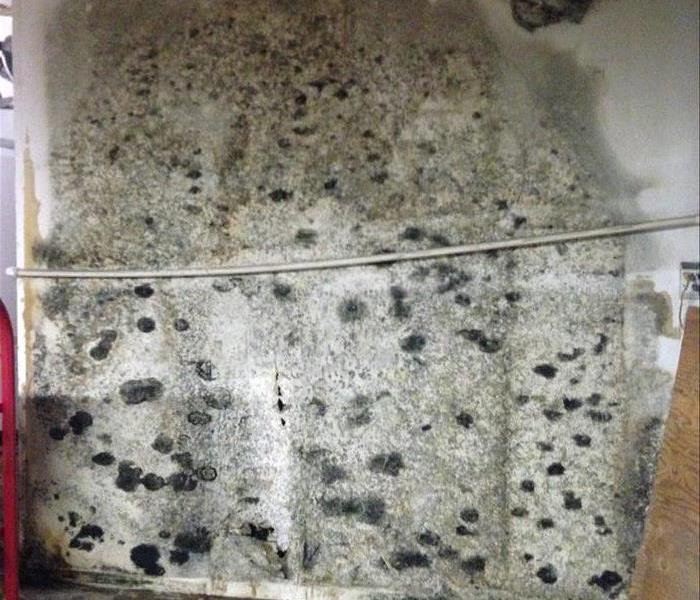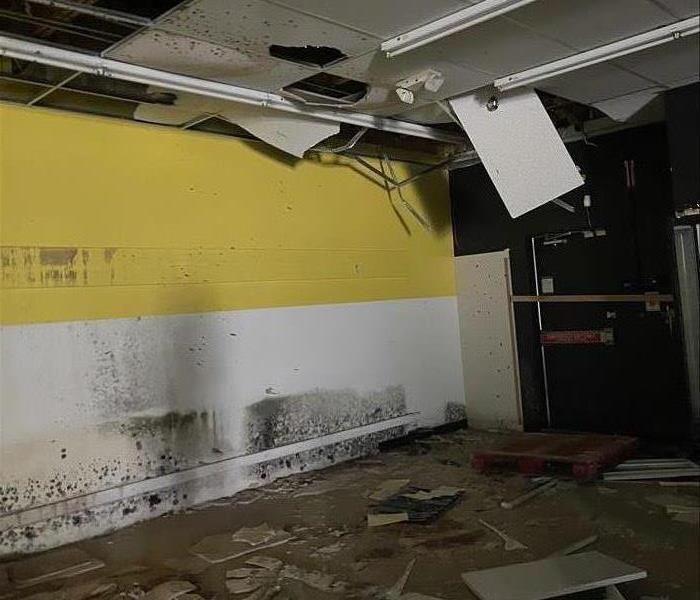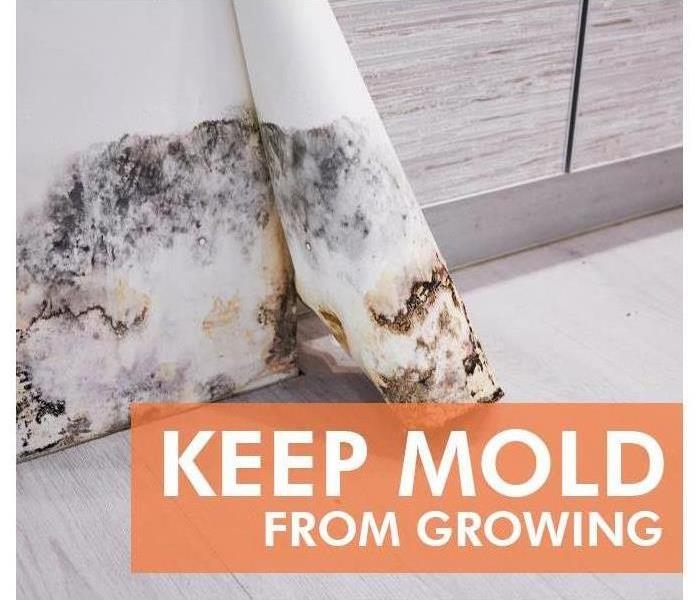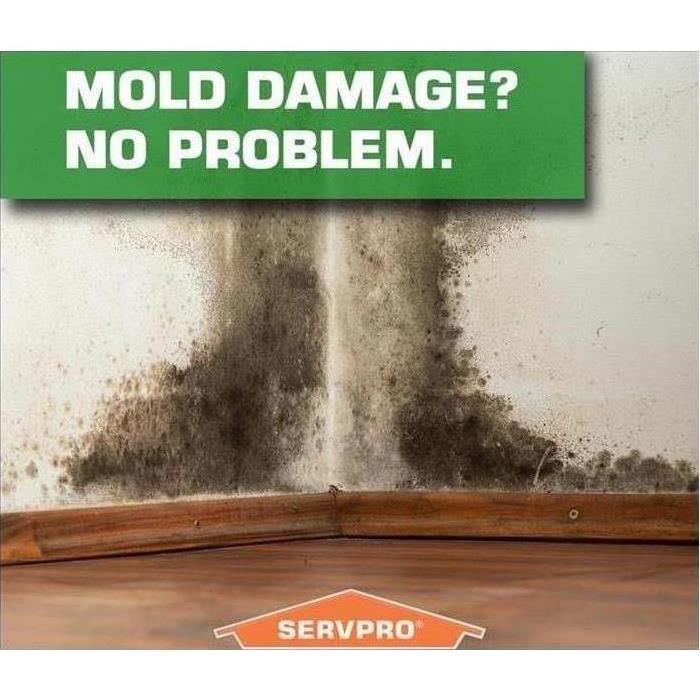Archived Mold Remediation Blog Posts
Mold Safety and Prevention
5/8/2023 (Permalink)
 What happens when walls are blocked by boxes and items during a water damage loss.
What happens when walls are blocked by boxes and items during a water damage loss.
Microscopic yet aggressive, these diminutive agents of decay are capable of causing rapid structural damage and can be difficult to detect. Maintaining a low-humidity interior to prevent moisture problems and taking immediate action to inhibit fungal growth after a flooding event are essential for avoiding potentially devastating restoration or remodeling steps.
Why Is Mold Such a Serious Structural Problem? High indoor humidity is the most common causes of black mold growth. When moisture levels meet low-airflow interiors, most porous building materials become an easy target of infestation, including drywall, insulation, hardwood flooring and of course carpeting. While many commercial buildings created after the 1970s have been designed to accommodate high-humidity environments, prevention and maintenance remain key. Common signs that your building may be at high risk for black mold growth include:
• Roofs, soffits or other exterior portions of the building material that consistently leak
• Poorly maintained fire sprinkling systems that drip
• Indoor humidity levels that are consistently over 60 percent
• Standing water or frequent indoor condensation
• Lack of thorough ventilation
• Poorly maintained HVAC equipment
• Distinctive, musty odor
Bacterial Growth Removal and Safe Precautions
2/4/2022 (Permalink)
SERVPRO of North San Bernardino is a company providing high services to help customers in our surrounding areas near. Our technicians are highly trained in the remediation process who work closely with the water damage technicians and the drying technicians to find the source of moisture and begin the removal process.
We follow a four-step process:
Containment – installing plastic barriers with negative air pressure inside the containment to stop the distribution of the microbial spores. We seal any vents or seals such as the HVAC system and set up clean rooms and decontamination rooms.
Bacterial Removal – porous materials must be removed and disposed of following guidelines, while the non-porous materials can be cleaned and sanitized. Any structural materials that are heavily damaged must be removed due to their structural integrity being compromised.
Cleanup – starting from the highest areas and working our way down and out, our technicians will wipe and disinfect all areas to remove any dust or settled spores.
Dry the Materials – once the source has been identified and repaired or removed, the entire area including structure and contents will be dried to its normal moisture content level.
Whether you find bacterial growth in your home or commercial building, at SERVPRO we are happy to schedule an inspection with our trained technicians to begin the process. We can offer advice on the best approach to take and the safety measures needed to ensure the safety of everyone involved.
Call SERVPRO of North San Bernardino to schedule your inspection today. We are here to help 24/7. (909)474-2340
What are you really dealing with
2/10/2021 (Permalink)
How Do I Tell If It’s Black Mold?
Since many types of mold can produce allergens and irritants, you should contact a qualified mold remediation company regardless of the color or type of mold. In many instances, multiple types of mold can exist in the same house or structure. If you suspect that you have a mold problem, contact a SERVPRO Franchise Professional immediately.
If You See Signs of Mold, Call Us Today 909-474-2340
SERVPRO Of North San Bernardino City
Understanding Mold
When water intrudes into your property, mold growth can start in as little as 48 hours. Consider the following mold facts:
• Mold is present almost everywhere, indoors and outdoors.
• Mold spores are microscopic, float along in the air, and may enter your home through windows, doors, or AC/heating systems or even hitch a ride indoors on your clothing or a pet.
• Mold spores thrive on moisture. Mold spores can quickly grow into colonies when exposed to water. These colonies may produce toxins.
• Before mold remediation can begin, any sources of water or moisture must be addressed. Otherwise the mold may return.
• Mold often produces a strong, musty odor, and that odor can lead you to possible mold problem areas.
• Even higher-than-normal indoor humidity can support mold growth. Keep indoor humidity below 45 percent.
Mold loves air
2/8/2021 (Permalink)
For mitigation of molds to take place, all sources of moisture and water need to be addressed otherwise it may regrow. The first step is to remove all traces of moldy growth immediately. Five fundamental principles must be applied by homeowners and employers to ensure successful mitigation of this fungus. They should focus on the source and moisture removal, safety, contamination control and assessment. Proper mitigation is essential once the fungi is removed because areas must be monitored to prevent it from occurring again.
It is important to determine the party that will be in charge of the mold cleanup. An environmental hygienist can determine what treatment can be used for this fungus. These hygienists mitigate the problem by sealing off the affected areas with plastic sheets to stop dispersion of the spores. Fungus should be dealt with by the wearing a face mask with high filtration and neoprene gloves. Once the mold cleanup is finished, the air around it needs to be cleaned using air exchange and scrubbers.

 24/7 Emergency Service
24/7 Emergency Service


